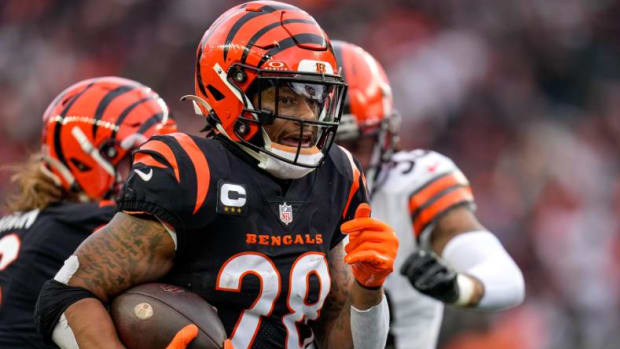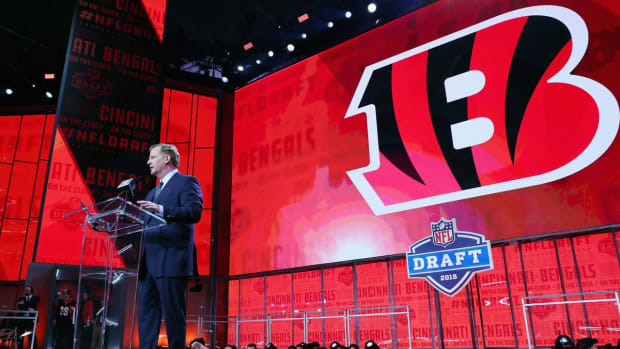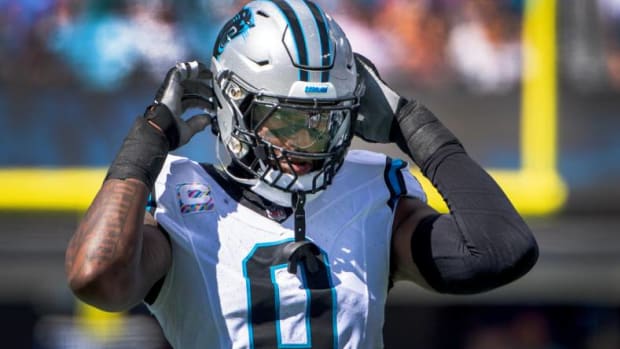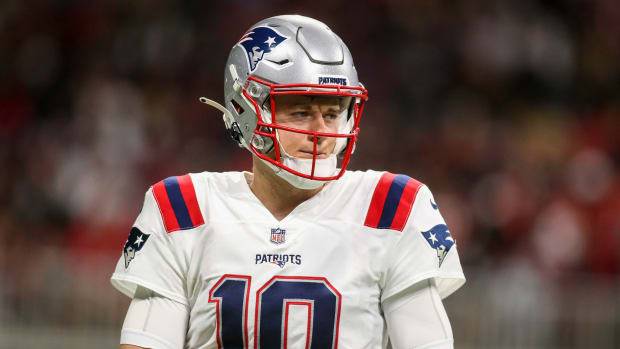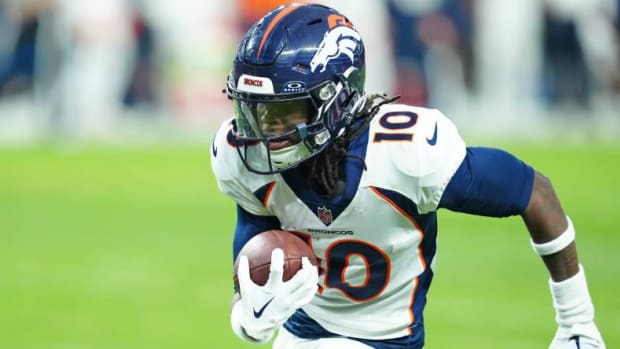NFL Supplemental Draft: CB Sam Beal scouting report
The annual NFL Supplemental Draft will be held Wednesday, July 11, with this year's class featuring three draftable defensive backs.
We'll take a close look at each of these prospects -- Western Michigan cornerback Sam Beal, Virginia Tech cornerback Adonis Alexander and Mississippi State safety Brandon Bryant -- starting with Beal:
Sam Beal, CB, Western Michigan
6-1, 196, 4.46
Grand Rapids, Mich. (Ottawa Hills)
8/30/1996 (Age 21)
Projection: 3rd Round
Summary
Beal, a two-year starter, Beal lined up primarily at right outside cornerback for the Broncos, playing mostly press-man coverage and relying on side-saddle technique over a backpedal to turn and run with receivers.
He credits his development to cutting his teeth against wide receiver Corey Davis (2017 first-round pick of the Tennessee Titans) during practice his first two seasons. He broke up 18 passes and intercepted two in the past two seasons.
Beal is an impressive size/speed athlete who is comfortable in bump-and-run coverage and started to see things quicker with added experience last season as a junior. While it is easy to appreciate his willingness to challenge routes, he tends to rely on athleticism and physicality over mechanics; experienced receivers will take advantage of his selective technique.
Overall, Beal's unsophisticated technique, anticipation and discipline need work before he is ready for a steady diet of NFL snaps, but he has coachable tools and impressive physical traits to be a "cover-and-clobber" style of outside cornerback.
Scouting Report
Strengths: Above average height/length combination with lean muscle definition. Former track athlete with NFL-level play speed (estimated 4.45-4.48 40-yard dash speed based on tape study). Smooth hips and lower body to turn and run with minimal wasted movements. Displays the recovery quickness to regain body position after a false step.
Aggressive press-man mentality with violent jabs off the snap to disrupt the timing of receivers. Looks to pin receivers against the sideline and doesn't shy using his body to cut off direction routes. Improved feel for reading route breaks in 2017 compared to his 2016 tape.
Serviceable run defender in college due to his physical mindset, arriving hot with forceful intentions to set the edge. Wraps and drives through his man, finishing strong to the ground once the ball-carrier is in his grasp. High school and college coaches speak highly of work habits.
Weaknesses: Needs to calm his feet in press as quick releases will eat him up, forcing him to hold. Uses predictable jam technique, and studious receivers evade his press moves until he learns to mix things up. Route anticipation runs hot/cold. Too easily turned around at the top of routes and inconsistent body position leads to spacing issues. Lacks fundamental transition and backpedal skills, which hinders his breaks and closing quickness.
Hyper-focused on playing his man and is late to turn and locate the football. Play strength doesn't always match his intentions. Competitive run defender, but wild angles and abandoned technique lead to ball-carriers bouncing off his contact or forcing missed tackles. Played primarily outside with minimal experience as an inside cornerback.
Background
A two-star football recruit out of high school, Samuel "Sam" Beal Jr. was a two-sport star at Ottawa Hills. In track and field, he placed third in the 100 meters (10.86 seconds) and 200 meters (21.76) in the 2013 Michigan state championships, earning multiple All-American honors. His personal-best in the 60 meters was 7.00 seconds. On the football field, Beal lined up at wide receiver, cornerback and return man.
As a recruit, Beal was officially listed as an "athlete," although most programs viewed him as a wide receiver. He wasn't ranked as a top-100 recruit in the state of Michigan and received only one FBS-level offer: Western Michigan.
Beal made the move to defensive back once he arrived in Kalamazoo and played in 12 games as a true freshman, posting 15 tackles and his first career pass break-up. As a sophomore, he earned a starting role opposite Darius Phillips (started 13 of 14 games) and recorded 55 tackles and eight passes defended.
Fending off nickel back Obbie Jackson, Beal returned to his starting post in 2017 and collected his first career interception against Sam Darnold in the season opener against USC. He finished his junior season with 26 tackles, including three for loss, 12 passes defended, two interceptions and one forced fumble over his 11 starts, earning a spot on the All-MAC second team.
Beal elected to return to Western Michigan for his senior season, but academic issues (lack of credits) put his 2018 season in jeopardy, leading him to the Supplemental Draft instead of petitioning the NCAA for eligibility.
NFL Comparison: Cordrea Tankersley
SUPPLEMENTAL DRAFT
The supplemental draft is carried out via e-mail among teams and is not televised. The selection order is different as well.
The teams are slotted into three groups based on their win/loss percentage the previous year and are then placed in a lottery, with the official order not being released to the public.
Teams interested in selecting a player contact the league via email with a list of the prospects they would draft and the round in which they would take them. If a team uses a third-round pick, for example, then it forfeits its third-round pick in the next draft.
The supplemental draft was originally created for players who had lost their eligibility between the primary NFL Draft in April and the beginning of the next season.
More on the history of the supplemental draft here.

